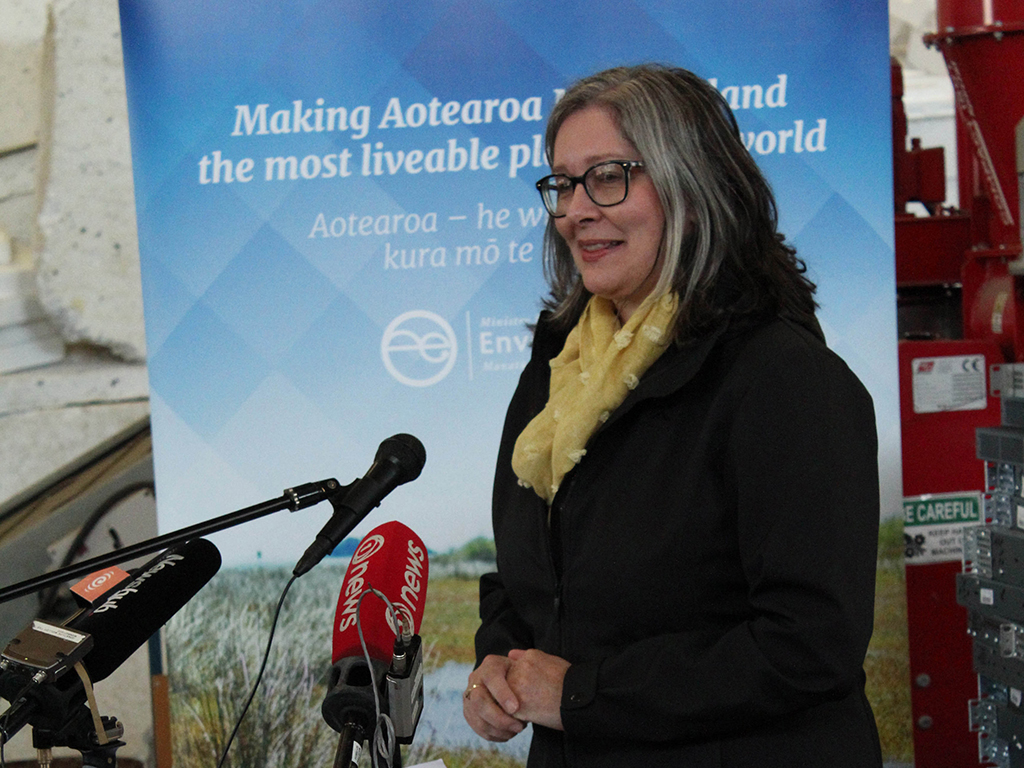How many times have you checked a plastic container for a recycling symbol only to find it can’t be recycled where you live? How often have you thrown an empty biscuit or chocolate packet in the bin and wished there was an alternative?
In my first BayBuzz article back in March I talked about “a world with less waste”. Well, that world is now in sight and not just for everyday plastic packaging, but for a huge range of products ranging from tyres to refrigerant gases, and electronic waste to agricultural chemicals.
On 29 July Associate Minister for the Environment Eugenie Sage declared six product categories as ‘priority products’ under the Waste Minimisation Act 2008. These are: plastic packaging, e-waste, refrigerants, tyres, agrichemicals and their containers, and farm plastics.
What this means is the way New Zealand deals with a large number of common and problematic types of waste is going to change for the better.
Let’s get technical, just briefly
When a product is declared a ‘priority product’ it means a regulated product stewardship scheme must be created for it. This scheme ensures the product is managed throughout its lifecycle and, crucially, makes sure there is a system to collect and then reuse, recycle or properly dispose of it at the end of its life.
The caveat, of course, is if people choose not to use that system, the product will end up in landfill or worse, as litter. But this change will give consumers options to do the right thing.
Consider just how many products this announcement encompasses – everything from the packaging around a child’s toy to the tyres on your car, the refrigerant gases in your heat pump and the cellphone in your pocket, plus many more.
Regulated stewardship is nothing new, with many OECD countries using it for decades, but it’s new for New Zealand.
Legislation allowing the Government to declare priority products in New Zealand has been around since the act was passed in 2008. However, no government has used regulated product stewardship before now.
It’s a big move and a big win for the country, both environmentally and socially.
Voluntary vs regulated
New Zealand has some voluntary stewardship schemes, but these suffer from the effects of free riders – those whose products get stewarded but do not contribute to a stewardship scheme. Regulated stewardship fixes this.
The major difference between the two is regulated stewardship compels the businesses which import, make, distribute and sell a product to contribute to its stewardship. The cost of stewarding the product invariable gets built into its price, which shifts the burden away from ratepayers, councils and the environment and towards those who make, distribute and use it.
A good example is the Resene PaintwiseTM government-accredited voluntary stewardship scheme for paint and its packaging, which we at 3R manage. When you buy Resene paint a PaintWise fee is built into the price (it’s listed separately on your receipt), so when you are finished with it you can take it back to a Resene store to be recycled, for free.
Since PaintWise started, enough paint has been donated to councils and community groups to cover 3 million square metres of graffiti, while the containers are recycled into new ones. It’s the circular economy at work, where resources are kept in use rather than being thrown away.
Wattyl and Dulux also have options but these are not ‘accredited’. The three brands account for about 90% of the market. All voluntary product stewardship schemes are subject to free riders who benefit from the schemes existence, without contributing to design or costs.
Paint is just one example of how a product can be stewarded – there are many other methods, depending on what it is, what it’s made of, how easily it can be reused or recycled, or what current systems are in place to steward it.
So, what does this mean for consumers and businesses?
The next step is work between Government and industry to co-design stewardship schemes which are best-suited for New Zealand.
In some cases, this means the reaccreditation of existing voluntary schemes under new regulated guidelines, and in others it means the development of schemes from scratch, within the same guidelines.
The act allows three years for the development of new schemes and one year for reaccreditation of existing schemes. Some industries, like tyres and refrigerants, have already done considerable work on scheme development.
For businesses, it will mean being part of the conversation as the schemes are developed and then contributing towards them when they are functioning. This isn’t just about paying to make sure products don’t become litter; but pushing thinking up the supply chain, so products are designed to be easier to reuse, repair or recycle.
For consumers, although it might mean a small increase in the cost of these products, it will provide options for them at the end of their life beyond the rubbish bin. For example, you might be able to take your electronics back to the store you bought them from, and plastic packaging could have its own recycling bin or drop off point in store.
This will mean less waste going to into your rubbish bin destined for landfill. Carting old TVs, fridges, and all manner of appliances to the dump will be a thing of the past. Tyre piles scattered around the countryside will also be no more.
It’s important to remember that well-designed stewardship schemes aren’t simply about ‘bottom of the cliff’ waste disposal or low-grade recycling. They aim to maximise resources, create efficiencies, resulting in products which last longer and are easier to repurpose or recycle, and ultimately shift us to a circular economy.
This is the beginning of a new era in waste minimisation in New Zealand.


Love this long overdue idea. Have always thought we shouldn’t be using packaging that Can’t be reused or recycled. Bring it on!